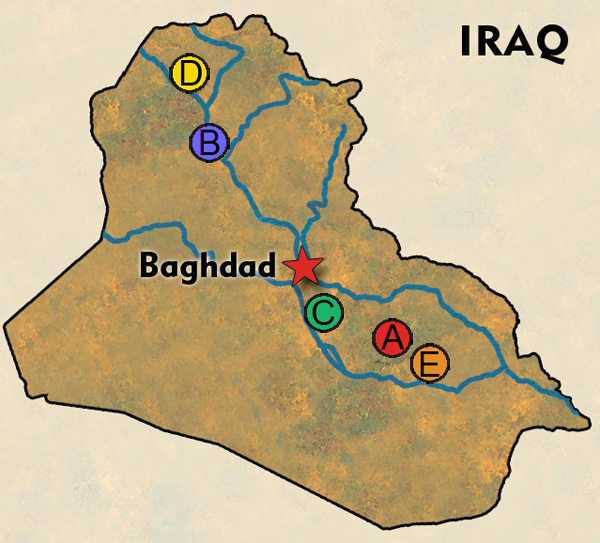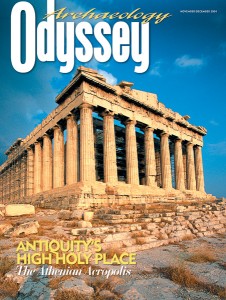Gazetteer of Looted Iraqi Sites: Part 1
Sidebar to: Going, Going, Going, Gone!

A. Adab (modern Bismayyah) The floruit of this Sumerian trading center came during the reign of Ur-Nammu (2112–2095 B.C.), founder of the Third Dynasty of Ur. The principal deity of the city was Ninhursag, goddess of fertility and consort of the water god Enki.
B. Ashur (modern Qal’at Sherqat) First settled in the mid-third millennium B.C., Ashur became one of the main cities of the Neo-Assyrian empire in the tenth century B.C. and served as the Assyrian religious center. Today the site contains the remains of second-millennium B.C. fortifications, ziggurats, palaces and royal tombs.
C. Babylon Site of the famous Hanging Gardens (and the biblical Tower of Babel), Babylon was the capital of the Old Babylonian empire, which was ruled in the 18th century B.C. by Hammurabi. Babylon also became the capital of the Neo-Babylonian empire of the mid-first millennium B.C. The site today contains the ruins of the palace of Nebuchadnezzar II (606–562 B.C.) and reconstructed city gates standing 47 feet high.
D. Dur-Sharrukin (modern Khorsabad) In 717 B.C. Dur-Sharrukin (meaning “Sargon’s Fortress”) was established by the Assyrian king Sargon II (721–705 B.C.) as his new capital. Seven gates gave access to the city, which contained a 240-room palace filled with relief carvings. When Sargon died, his son, Sennacherib (704–681 B.C.), moved the Assyrian court to Nineveh.
Already a library member? Log in here.
Institution user? Log in with your IP address.

